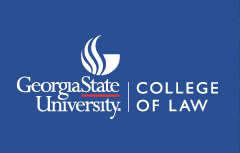Document Type
Article
Abstract
Artificial Intelligence (AI) is not some futuristic technology—it exists in everyday products like your Uber app or the Siri voice on your nightstand. Its development is meteoric; foundation models are the latest AI advancement. These models are a type of AI that not only produces a range of products but is also integrated into other AI models. This AI Swiss army knife is proving to be an incredible asset for economic development and national security. But, like other world- altering technology, there is a pernicious side of foundation models. Their flexibility offers adversaries, such as state and non-state actors, the ability to level the global playing field and shift the global order in terms of defensive capabilities. As the conflict in Ukraine has shown, AI is not the future of war—it is the present. Hundred-dollar AI-fueled drones have been used to disable and, at times, destroy hundred- million-dollar war machines.
To address this Jekyll and Hyde potential of foundation models, former-President Joe Biden issued Executive Order (EO) 14110. But this EO is the starting gun, not the end of the race. In fact, EO 14110 even admits that more understanding and information are required for this nascent technology. To properly legislate foundation models, Congress will need to act. Legislation, however, must be measured and thoughtful with a burgeoning technology like foundation models. Otherwise, innovation will be stamped out, giving way to inflexible, misguided laws.
This Paper offers a path forward to balance the scale between innovation and legislation. This Paper first provides an outline of former-President Biden’s EO, with a focus on Section 4.6. It then turns the underlying technology of foundation models, explaining how labeling foundation models as “open” versus “closed” creates a false dichotomy. Next, the Paper compares proposed U.S. legislation to the European Union’s recent approach to legislating foundation models. National security implications of AI are then outlined, providing real- world examples of AI usage from the current conflict in Ukraine and across the globe. This Paper concludes with recommendations on how to legislate foundation models. By balancing legislation with innovation, this paper develops a novel approach to regulating foundation models—the “fastest-growing consumer technology in U.S. history.”
Recommended Citation
Steven Arango,
A Legislative Foundation for Foundation Models,
41
Ga. St. U. L. Rev.
531
(2025).
Available at:
https://readingroom.law.gsu.edu/gsulr/vol41/iss3/8
